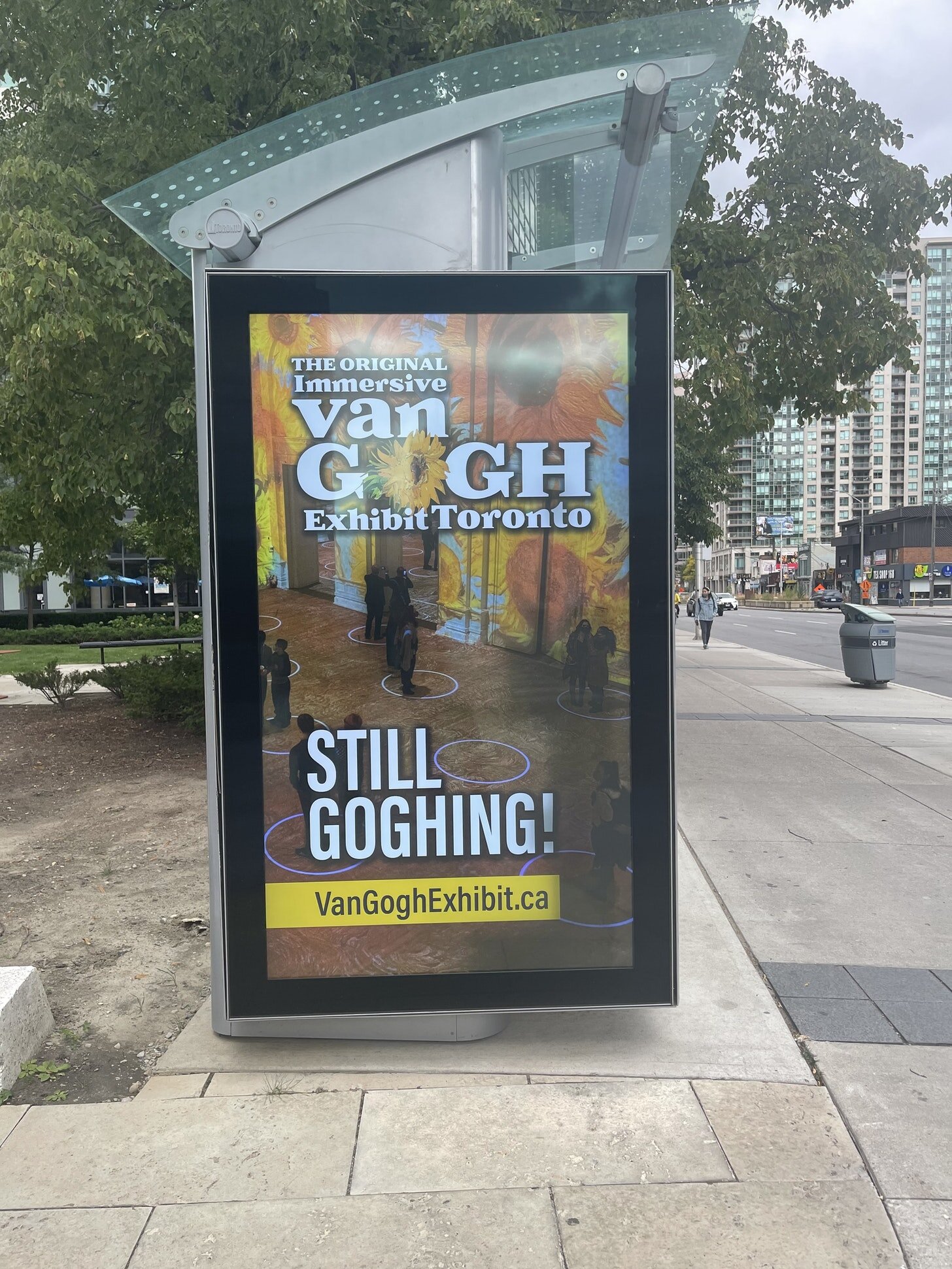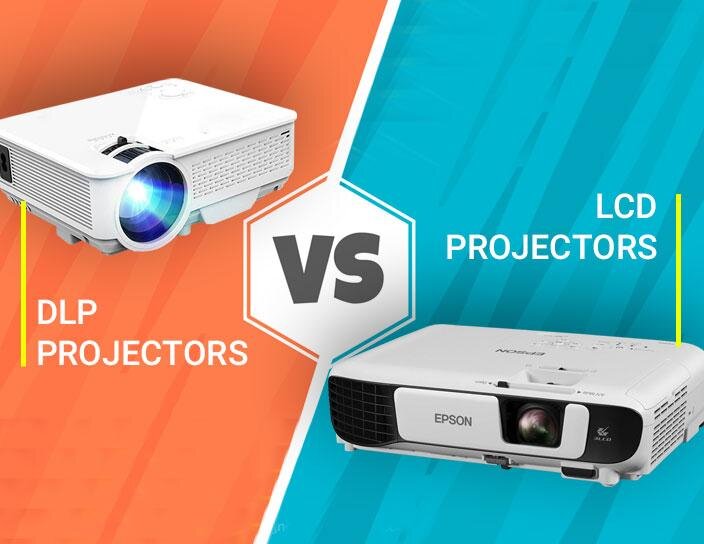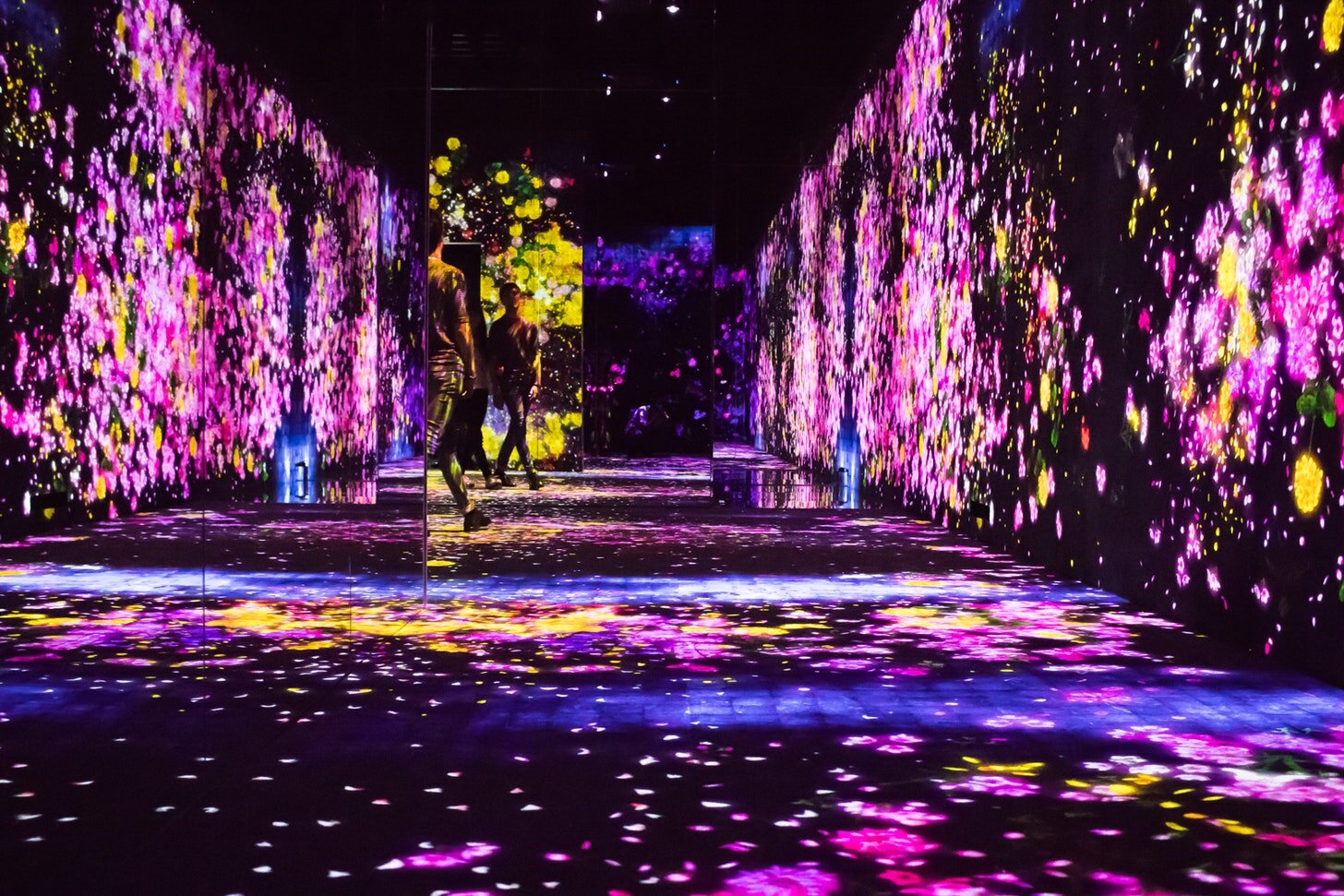Immersive Arts: Beyond Van Gogh
From catapulting niche, foreign series like Cobra Kai and Squid Game to the #1 spot for months, to the 200% increase in sales of chessboards following Queen's Gambit, there's long been evidence of the Netflix effect: how Netflix’s reach can stir cultural phenomena and talking points. Here at Analytics by Design, our favorite is the Rise of Immersive Exhibits of Famous Artists and Their Art. This isn't due to some blockbuster art documentary or any celebrated films about renowned artists - though, those films are in their own right worth binging and we can sure make some recommendations in our humble opinion - but rather to an inconspicuous, somewhat controversial, series about an American girl - Emily in Paris.
Now, while “Emily in Paris” in itself is quite debated, we’re here to unpack the Immersive Exhibits and how it has and is one of the most fascinating and dynamic intersections of technology and the arts. We’ve written before on Augmented Reality (AR) and Virtual Reality (VR) and how it plays an integral role in the future of media. While Immersive Exhibits are more hardwood and cold steel than the abstract bits we see in our phones, it might be one of the best examples of an AR.
You might be wondering how long we as humans have been playing with projections and AR/VR in creating immersive experiences and why all of a sudden immersive art shows have become a hit; more importantly, whether the rising wave of immersive arts has the desired merits in pushing the general public into appreciating arts and design.
Since the debut of “Emily in Paris”, there have been over 400 Van Gogh immersive art rooms being created across the United States and Canada. All of these companies are working from the same source material — the same Starry Night, the same Sunflowers — that is, Van Gogh’s instantly recognizable pieces. Besides getting the Van Goh hype, we also saw some similar immersive exhibitions organized for other renowned artists, like Claude Monet, Picasso, Gustav Klimt, to name a few.
We are not going to discuss why many exhibition organizers unanimously chose some of the most recognizable artworks from renowned artists, but we are going to dive deeper into the core technology that creates “sensory extravaganza” and its inherent business model that made it a global phenomenon of leveraging digital arts in recreating famous artworks.
Spotted in Toronto: A wild Van Gogh exhibit poster
Core Technologies, Not So New!
Part 1: A Bit History of Projectors
(Jan van Musschenbroek's magic lantern is projecting a monster)
We cannot skip the humble “projector” in explaining the technologies used in creating our modern installations. One of the earliest devices was a “magic lantern”, created in 1659 by a Dutch scientist, which was followed by the invention of an opaque projector (also known as the episcope) and the megascope in between the18th to 19th centuries. These early incarnations gained more popularity in education and entertainment areas.
Not until the 1940s to 1960s did we see the early development of computers, which was also around the same period when optical projectors started seeing greater adoption, though most of these were only for large research institutions. Many of you can relate to our school lectures when professors would turn on overhead projectors for their lectures. Yes, technologically, there is not much difference between the slide projectors that are still used today and those created around this era.
The major technological leap did not happen until the dawn of the digital era, between the 1970s and 1990s, when Digital Light Processing was introduced. The original digital light processing projectors have many mirrors, each of which projects one pixel of the image, and the image quality certainly was not able to handle videos, merely enough for small-scale images, slides, and transparencies. With known restrictions, the first commercially available DLP projectors did not enter the market until 1996, having much better image quality and accuracy, but also a steep price tag.
After this, there are other technologies that are the byproduct of scientists played with a variety of materials for better projection quality, such as Liquid Crystal Display (LCD) and Liquid Crystal on Silicon (LCoS). The earlier one leverages liquid crystals and the later one makes use of a liquid crystal layer on a silicon backplate that reflects light from the source.
Most consumers aren’t familiar with these terms until the introduction of “Light-Emitting Diodes”, or LED, as most people refer to. The major difference between LED and its successors is the replacement of old halogen lamps to project contents, and instead, it uses a light-emitting diode, which is a semiconductor light source that emits light when current flows through. LED projectors have a much slimmer appearance due to the disappearance of a lamp (say bye-bye to a bulky machine and hello, flat screen ) and they also produce a sharper image. More recently, in order to meet consumer expectations on smaller and lighter devices, we see many large projectors with wires have been replaced by pocket-size LED projectors.
Of course, technological advancement won’t stay idle.
Laser projectors are the latest invention in the projector space. Without getting into the specifics, every released photon from laser projectors strikes another atom to release a similar photon, resulting in the beam of coherent light, whereas the light emitted by LED produces incoherent light. Furthermore, the light beam generated by the laser is monochromatic, aka, single color, whereas light emitted by LED consists of many colors, causing minor discoloration.
(Source: Electronics Coach)
Besides image quality and consistency, laser projectors generate less heat and have a longer lifespan. Projector lamps (i.e. DLP) typically last between 3,000 and 6,000 hours but laser projects on the other hand have an average lifespan of 20,000 hours, which is at least 3 or 4 times better performance than their counterparts. In a commercial setting, laser projectors have obvious benefits, as they can operate for long hours with minimal maintenance and do not require regular cleaning nor filter changes, which reduce downtime.
Part 2: Projection Mapping - The Origin of Using Projectors in Entertainment
After understanding the development of projectors, we turn to the techniques that are crucial for creating an immersive environment projection mapping: video mapping and spatial augmented reality. These concern turning often irregular objects into two or three dimensional visual projection to produce a cohesive image throughout the surfaces.
One of the earliest use cases for projection mapping is Disneyland’s Haunted Mansion attraction in the 1996s. Another example is the Beatles' music video, Blue Jay Way, in 1967 - an image of a cat face was projected on George Harrison’s face. We know it's a bit creepy, but what else can we say but it’s avant-garde.
Honestly, we had no idea why the origin of the artistic application of visual projection seems to be always associated with gothic yet somewhat horrifying style, unlike these modern application has often been associated with ceremonial and joyful events.
Unboxing “Immersive Art Exhibitions”
We understand image blending from a theoretical standpoint but how does it work to create a sensory extravaganza that makes the audience forget about anything else.
First, we are talking about commercial projector installation, which means the projectors need to meet three requirements: energy efficiency, durability, and precision. Based on the explanation above on projectors, laser projectors have superiority in all three quadrants.
Second, in terms of installation, the best way to achieve the optimal results is through having a lamp-shaped solution, with many projectors installed at the perfect angle. The projector was placed directly on the top of the projection area and the optics needed to be calibrated to project on an object without distortion.
Take Van Goh’s exhibition: the technical team installed a total of 53 projectors to be run in tandem to create images that are 26 feet high and up to 170 wide. For convenience, some images are divided into vertical panes rather than horizontal ones, in order to meet the image height requirements in most cases. After that, images being projected on desirable objects need to be blended in order to create a cohesive image, and the process is referred to as “image blending”.
At first glance, you might consider this is a rather straightforward process, as you can simply cut the image into a few pieces and try to match their edges to each other, which is called “edge butting” (see illustration below). In reality, this method is nearly impossible to achieve, as the projectors need to be carefully arranged so that each side of the image edge can be matched perfectly.
There are two main challenges regarding this technique: 1) Various different characteristics of projectors, even using the exact same model, the projection quality can still vary, 2) Require exact correct positioning of each projector, which in reality results in a tiled image rather than a seamlessly continuous image like what we see on immersive art exhibitions.
(Figure: Image Butting)
Alternatively, we can also have the pieces of image overlap with each other (“image blending”), allowing a greater margin of error during imaging matching and positioning. As illustrated below, the left display image’s right edge overlaps with the center display image’s left edge, whereas the right display image’s left edge overlaps with the center display image’s right edge.
(Figure: Image Blending)
The only problem with this approach is that the overlapping area will be twice brighter than the other areas. To overcome this, the technician can add a luminance control function in each of these areas to gradually reduce the luminance from one side as we increase the luminance from the other.
(Figure: Blending in the overlapping regions gradually produces a visually correct image)
At this point, all the major technologies required in creating immersive exhibits have been uncovered and the remaining work lies on artists’ creative vision and technicians’ skill level to execute the final production on the vision.
Business Opportunities Emerge
With the advancement of the projector and projection mapping, we started to see the technical aspects become mature enough for large installations of immersive arts, but besides “Instagram culture” and the popularity of “Emily in Paris”, is there anything that also fueled the commercial success?
We believe the continuously decreasing cost of projectors and incrementally better and lighter projectors are the ones to thank. As mentioned above, the laser projector’s lifespan is at least 3 or 4 times longer than lamp projectors, and minimal maintenance also means less downtime for exhibition organizers.
(Source: Bloomberg, Photographer: Dan Swartz/Fever)
Currently, purchasing the same projector that is used for commercial art exhibitions like the ones used in the overly popular Van Gogh’s show only costs around four thousand dollars. If we do the simple math here, the total cost of 52 projectors used in Van Gogh’s exhibition would not exceed $230,000. Even with some larger exhibitions that use up to 150 projectors, the total cost would only be around $600,000 to $800,000.
Considering 20,000 hours of average projector lifespan and 10 hours of business hours per day, these projectors can last 2000 days, which is more than 5 years. Maybe this also explains why after Van Gogh, we see other exhibitions emerge, since one exhibition typically only lasts a few months before the audience loses interest. In order to take advantage of these laser projectors’ superior longevity, we should see more immersive art shows.
Of course, projectors are just a small part of the whole production, hiring technicians to set up the space and venue costs need to be also considered. According to Iacampo, one of Van Gogh Immersive Art Show producers, it costs around $1 million to set up a Van Gogh pop-up show in a U.S city.
In addition, choosing famous artists’ artworks also won’t incur insanely high costs as most of these artworks fall in the public domain; therefore, only licensing fees that producers pay museums or photographers for the usage of images.
Corey Ross, president of Toronto-based Lighthouse Immersive and one of the producers behind “Immersive Van Gogh” told Bloomberg that they sold over 3.2 million tickets sold, which makes it the most successful attraction in the world on Ticketmaster. Considering a typical ticket costs between 20 to 70 dollars, the total revenue is quite lucrative.
Other Fantastic Ways to Embrace Immersive Arts?
Looking at the incredible commercial success of Van Gogh’s Immersive Art Exhibition and its alike, we cannot stop from asking ourselves whether this is going to be a pivotal moment in arts that the audience finally starts appreciating going back to museums.
(Source: teamLab website)
One of the very first, and arguably most famous, in this space is teamLab Borderless from Tokyo, which started in 2018. The museum has been completely transformed into a wonderland, providing not simply immersive but interactive experiences for visitors. Visitors can walk barefoot through water and light installations and the environment responds to visitors’ movement, certainly making this an unforgettable experience for first-time visitors.
Within its first year of opening, over 2.3 million visitors have come to the museum, making it the most popular single-artist museum in the world, surpassing Van Gogh Museum in Amsterdam in 2018 (Surprise!). teamLab became a world-famous art collective, attracting an interdisciplinary group of artists, programmers, engineers, CG animators, mathematicians, and architects to continue to explore the boundless possibilities emerging from the confluence of art, science, technology, and the natural world.
(Source: teamLab website)
Unlike temporary exhibitions like Van Gogh’s, many immersive art installations tend to leverage existing space permanently. Here in Canada, OASIS was created in the pandemic as Canada’s first immersive exhibition - the project completely transformed the ground floor of the Montreal Convention Center (21,500 square feet space) as part of the joint initiative between Montreal Tourism Ministry and creative artists, to harness the power of immersive audio and video experiences for audiences. Some of these installations serve as permanent homes for future spectacles, which have higher price tags ranging from $4 million to $15 million.
We think this is just a beginning as the immersive art form continues attracting younger demographics like Gen-Z and millennials to museums and galleries, the space won’t be just filled with quick COVID fix after nearly a year of social isolation. These immersive art pop-ups provide a platform for many first-time visitors to start their interest in arts, while showing a viable business model. As a consumer, we are also concerned about the assembly line style of immersive art pop-up might diminish our excitement due to repetition.
(Source: OASIS website)
We should start experimenting with other content, other than Van Gogh or Piccaso and their equivalents, these ultra-famous artists, to help the audience explore the relationship between arts, the natural world, and society. teamLab from Tokyo has already proven the confluence of the art collective and immersive technology can still be incredibly successful, commercially.
At Home Immersive Art? YES, PLEASE!
In the end, just in case you are tempted to create your own immersive experience. We got you covered! A San Francisco startup, Lightform, specializes in creating consumer digital projectors, and now offers the toolkits for your to create sounds-responsive interactive arts. Yes, you can turn your living room into an immersive art show, with around $1,000 USD.
This company started in 2014, received $18M from $18M from Baidu Ventures, Amazon Alexa Fund, Lux Capital, Dolby Family Ventures, and other investors. It sold over 11K units of products already (mostly to designers for bespoke augmented reality projects). We are excited to see any creative art projects that would emerge after the popularity of the Immersive Exhibition.
Screenshot of Lightform demonstration video















